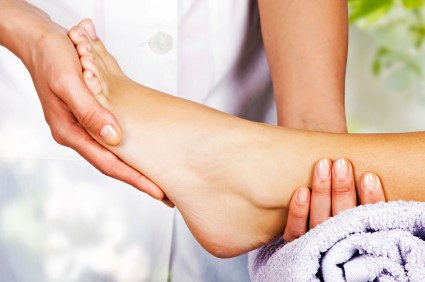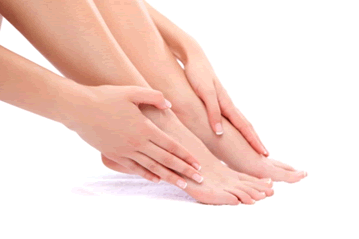Blog
Tennessee Titans Chance Warmack Suffers from Ingrown Toenail Pain
 Chance Warmack of the Tennessee Titans and his big toes are feeling better prepared for their next game since having an ingrown toenail removed. During a preseason game against the St. Louis Rams, Warmack played through the pain and immediately went to see the doctor the next day to remedy the situation. The doctor removed the ingrown nail from both big toes with Warmack describing it as “toe meat.” Since then the guard has started to take better care of his feet and toenails stating, “I just have to soak it and take care of it... When I am not practicing it hurts.”
Chance Warmack of the Tennessee Titans and his big toes are feeling better prepared for their next game since having an ingrown toenail removed. During a preseason game against the St. Louis Rams, Warmack played through the pain and immediately went to see the doctor the next day to remedy the situation. The doctor removed the ingrown nail from both big toes with Warmack describing it as “toe meat.” Since then the guard has started to take better care of his feet and toenails stating, “I just have to soak it and take care of it... When I am not practicing it hurts.”
Ingrown toenails can become painful if they are not treated properly. To learn more, consult with Dr. Michael E. Newman and Dr. Denise Kohler of Pennsylvania. Our doctors will provide you with quality foot and ankle treatment.
Ingrown Toenails
Ingrown toenails occur when a toenail grows sideways into the bed of the nail, causing pain, swelling, and possibly infection.
Causes
- Bacterial infections
- Improper nail cutting such as cutting it too short or not straight across
- Trauma to the toe, such as stubbing, which causes the nail to grow back irregularly
- Ill-fitting shoes that bunch the toes too close together
- Genetic predisposition
Prevention
Because ingrown toenails are not something found outside of shoe-wearing cultures, going barefoot as often as possible will decrease the likeliness of developing ingrown toenails. Wearing proper fitting shoes and using proper cutting techniques will also help decrease your risk of developing ingrown toenails.
Treatment
Ingrown toenails are a very treatable foot condition. In minor cases, soaking the affected area in salt or antibacterial soaps will not only help with the ingrown nail itself, but also help prevent any infections from occurring. In more severe cases, surgery is an option. In either case, speaking to your podiatrist about this condition will help you get a better understanding of specific treatment options that are right for you.
If you have any questions, please feel free to contact our offices located in Plymouth Meeting and Ambler, PA. We offer the newest diagnostic and treatment technologies for all your foot and ankle needs.
Maggots May be Used to Heal Chronic Diabetic Ulcers
 According to a study being tested at the Malcom Randall Veterans Affairs Medical Center, maggots may be used to treat chronic diabetic ulcers. While maggot therapy has been an ancient practice, it is going through clinical trials to see if the feasting of dying tissue and germs in wounds can have positive effects. The study is set into involve 128 Veterans with diabetic ulcers where the maggots or larvae will be produced and sterilized in an “eight step-step control” routine. Although the term “maggot” does have negative connotations, they have been proven to clean out wounds nicely under the right control.
According to a study being tested at the Malcom Randall Veterans Affairs Medical Center, maggots may be used to treat chronic diabetic ulcers. While maggot therapy has been an ancient practice, it is going through clinical trials to see if the feasting of dying tissue and germs in wounds can have positive effects. The study is set into involve 128 Veterans with diabetic ulcers where the maggots or larvae will be produced and sterilized in an “eight step-step control” routine. Although the term “maggot” does have negative connotations, they have been proven to clean out wounds nicely under the right control.
Although the use of maggots to treat diabetic feet may seem kind of extreme, general diabetic foot care is extremely important. If you are suffering from diabetes or have any other concerns about your feet contact Dr. Michael E. Newman and Dr. Denise Kohler of Pennsylvania. Our doctors will diagnose and treat your foot and ankle needs.
Diabetic Foot Care
Diabetes affects millions of people every year. Diabetes can damage blood vessels in many parts of the body, including the feet. Because of this, taking care of your feet is essential if you have diabetes, and having a podiatrist help monitor your foot health is highly recommended.
The Importance of Caring for Your Feet
- Routinely inspect your feet for bruises or sores.
- Wear socks that fit your feet comfortably.
- Wear comfortable shoes that provide adequate support.
Patients with diabetes should have their doctor monitor their blood levels because blood sugar levels play such a huge role in diabetic care. Monitoring these levels on a regular basis is highly advised.
It is always best to inform your healthcare professional of any concerns you may have regarding your feet, especially for diabetic patients. Early treatment and routine foot examinations are keys to maintaining proper health, especially because severe complications can arise if proper treatment is not applied.
If you have any questions, please feel free to contact our offices in Plymouth Meeting and Ambler, PA
. We offer the newest diagnostic and treatment technologies for all your foot and ankle needs.
The Best Ways to Avoid Heel Spurs
 Heel spurs occur when there is extreme strain on the heel bone and surrounding ligaments causing a calcium deposit on the heel bone. In order to avoid the painful condition many suggest to wear shoes that are your size, massage the feet after walking around in heels and consider switching to a flatter shoe, and stretch the feet. Additionally, running on hard surfaces or barefoot can increase risk of heel spurs. Avoid exerting too much pressure on the heels and get fitted for a proper running shoe to reduce chances of heel spurs forming.
Heel spurs occur when there is extreme strain on the heel bone and surrounding ligaments causing a calcium deposit on the heel bone. In order to avoid the painful condition many suggest to wear shoes that are your size, massage the feet after walking around in heels and consider switching to a flatter shoe, and stretch the feet. Additionally, running on hard surfaces or barefoot can increase risk of heel spurs. Avoid exerting too much pressure on the heels and get fitted for a proper running shoe to reduce chances of heel spurs forming.
Heel spurs can be incredibly painful, and sometimes might make you unable to participate in physical activities. To get medical care for your heel spurs, call one of our podiatrists of Pennsylvania. Our doctors will do everything possible to treat your condition.
Heels Spurs
Heel spurs are formed by calcium deposits on the back of the foot where the heel is. This can also be a cause from small fragments of bone breaking off one section of the foot, attaching it to the back of the foot. Heel spurs can also be bone growth on the back of the foot. Bone may grow in the direction of the arch of the foot.
Older individuals usually suffer from heel spurs. Pain sometimes intensifies with age. Heel spurs are known to cause a substantial amount of pain. One of the main associations spurs are related to is plantar fasciitis.
Pain
The pain associated with spurs is often times because of weight placed on the feet. When someone is walking their entire weight is concentrated on the feet. Bone spurs then have the tendency to poke and affect other boners and tissues around the foot. As the pain continues the feet will become tender and sensitive over time.
Treatments
There are many ways to treat heel spurs. If one is suffering from heel spurs in conjunction with pain there are several methods for healing. Medicines, surgery, and herbal care are some options.
For more information about Heel Spurs, follow the link below.
If you have any questions feel free to contact our offices in Plymouth Meeting and Ambler, PA. We offer the latest in diagnostic and treatment technology to meet your needs.
Woman Runs Marathon with Morton’s Nueroma In Memory of Deceased Best Friend
 Breast Cancer Now leader Lynn Parfey participated in her first ever run at the recent Great North Run as a commitment to the dying words of her friend Shirley Garman, despite suffering from Morton’s Neuroma. Although Parfey dealt with the excruciating pain in her feet to take on the 13.1 mile challenge, doing it in her friend's memory was worth it. “I’m not brave,” shared Parfey. “The people that go through any form of cancer are the brave ones…. I’m not getting any younger and I just want to do something different to do what I can.” Parfey first involved herself with the charity in 2008.
Breast Cancer Now leader Lynn Parfey participated in her first ever run at the recent Great North Run as a commitment to the dying words of her friend Shirley Garman, despite suffering from Morton’s Neuroma. Although Parfey dealt with the excruciating pain in her feet to take on the 13.1 mile challenge, doing it in her friend's memory was worth it. “I’m not brave,” shared Parfey. “The people that go through any form of cancer are the brave ones…. I’m not getting any younger and I just want to do something different to do what I can.” Parfey first involved herself with the charity in 2008.
Morton’s Neuroma is a very uncomfortable condition to live with. If you think you have Morton’s neuroma contact Dr. Michael E. Newman and Dr. Denise Kohler of Pennsylvania. Our doctors will treat your foot and ankle needs.
Morton’s Neuroma
Morton's neuroma is a painful foot condition that commonly affects the areas between the second and third or third and fourth toe, although other areas of the foot are also susceptible. Morton’s neuroma is caused by an inflamed nerve in the foot that is being squeezed and aggravated by surrounding bones.
What Increases the Chances of having Morton’s Neuroma?
- -Ill-fitting high heels or shoes that add pressure to the toe or foot
- -Jogging, running or any sport that involves constant impact to the foot
- -Flat feet, bunions, and any other foot deformities
Morton’s neuroma is a very treatable condition. Orthotics and shoe inserts can often be used to alleviate the pain on the forefront of the feet. In more severe cases, corticosteroids can also be prescribed. In order to figure out the best treatment for your neuroma, it’s recommended to seek the care of a podiatrist who can diagnose your condition and provide different treatment options.
If you have any questions please feel free to contact our offices located in Plymouth Meeting and Ambler, PA. We offer the newest diagnostic tools and treatments to treat your foot and ankle needs.
